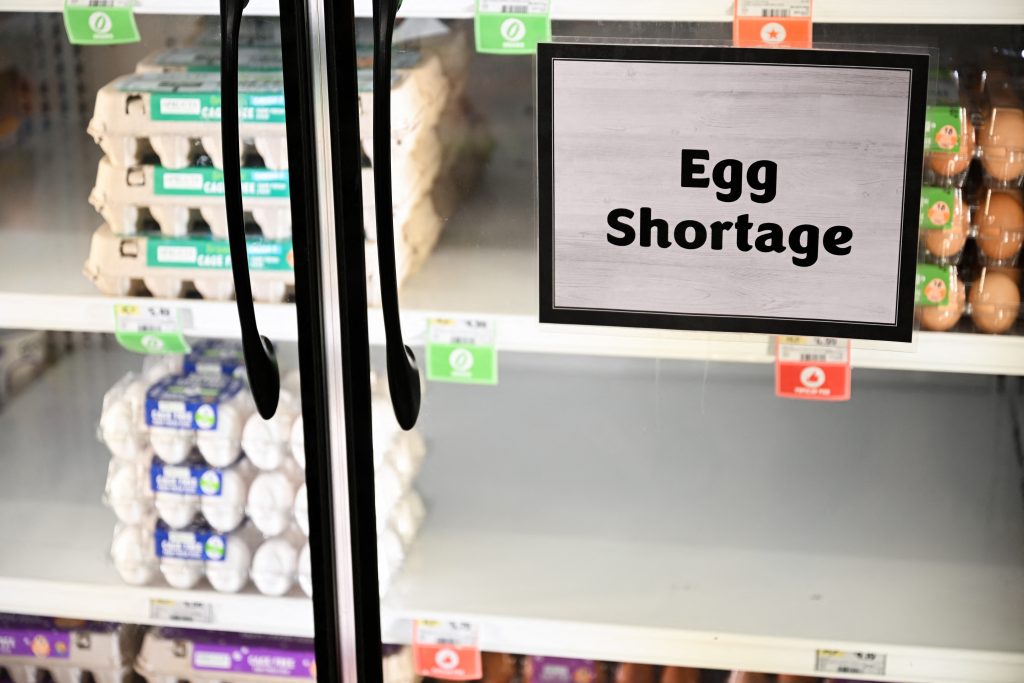
A surge in egg prices has hit North America hard, with costs soaring over 150% due to an avian flu outbreak. Speculation is growing that Europe may be exporting surplus eggs to the U.S. to help offset the shortage.
In the United States, eggs are a breakfast staple, much like coffee or toast. Whether scrambled, boiled, or fried, they are a must-have in many households. This explains why the sudden price jump has stirred frustration across the country.
Over the past two weeks, Americans have faced egg prices exceeding $10 per dozen. The supply crunch, triggered by the avian flu outbreak, has forced some retailers to limit purchases. In just one year, the cost of eggs has surged by 159%, leaving many consumers struggling to keep up.

Avian Flu’s Impact on Poultry Supply
Since the H5N1 virus surfaced in early 2022, more than 166 million birds—both wild and farmed—have been culled. The U.S. Department of Agriculture recently confirmed that 30 million poultry have been slaughtered this year alone. This accounts for 12.3% of caged chickens and nearly 8% of free-range chickens in the country.
Amid these challenges, U.S. officials have turned to Europe for support. Despite past tensions over trade and tariffs, Washington has reached out to several European nations for egg imports. However, previous restrictions on European eggs, aimed at preventing further spread of avian flu, complicate the process.
Can Europe Fill the Gap?
European egg supplies have also suffered in recent years due to avian flu outbreaks. Poland, Hungary, and France faced the worst of the crisis, while Portugal reported an outbreak near Lisbon earlier this year. In the UK, strict infection control measures were implemented following a suspected case in Northern Ireland’s County Tyrone.
Due to these challenges, most European countries have limited capacity to export fresh eggs. Hans-Peter Goldnick, president of the German Egg Producers’ Association, noted that Germany has sent small shipments through the free raw egg exchange. However, he emphasized that the country does not have a surplus.
Speaking to NDR on March 19, Goldnick reassured Germans that there would be enough eggs for Easter. He advised consumers to buy as usual rather than stockpile. Official data shows that in 2023, about 25% of eggs sold in Germany were imports.
Meanwhile, Finland remains unable to assist due to U.S. import restrictions. A Finnish government official stated that even if these restrictions were lifted, the country would still lack surplus eggs. Sweden and Denmark echoed similar concerns when approached by the U.S.
Logistical Barriers to Imports
Beyond trade restrictions, logistics pose another hurdle. Eggs require stable temperatures during transport, making shipment challenging. Air freight is costly, while sea transport takes too long to meet urgent demand.
Turkey and the Netherlands Step In

Last month, Reuters reported that Turkey plans to ramp up egg exports to the U.S. Under a new agreement with Washington, Ankara committed to shipping an extra 15,000 tons of eggs. Turkish Producers Association President Ibrahim Afyon confirmed that by July, Turkey will have sent 240 million eggs—six times more than its total exports to the U.S. last year. These exports are expected to generate $26 million in revenue.
Bloomberg reported in February that the U.S. is also considering import permits for the Netherlands, the world’s top egg producer. The deal would include liquid and powdered eggs, providing additional relief for the American market.
As egg shortages persist, U.S. consumers continue to grapple with rising costs. Whether European and Turkish exports can bridge the gap remains to be seen.


